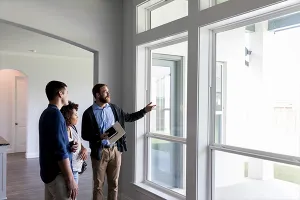When it comes to prepping a home to sell, Guest House seeks to revolutionize room staging by bringing together digital merchandising, personalization and speed. Guest House was selected as part of the National Association of REALTORS®’ 2025 Second Century Ventures’ REACH program, which recognizes tech startups that show promise in shaking up the real estate space.
“We want to simplify the staging process and make it as easy as ordering groceries online,” says Alex Ryden, founder of Guest House. The platform allows real estate pros to cue up staging services and instantly receive quotes, schedules and mood boards. Agents and sellers know precisely how the home will be designed and when.
“We like to think that we’re bringing an Amazon-like experience to the home staging market,” including fast delivery of materials for setup in a matter of three or four days.
In addition to a staging package, agents and sellers can choose among add-on options like professional cleaning, photography and media, and moving services. “A few clicks of the button, and you can have your house staged just like that,” Ryden says.

The ‘Red Shoes in the Window’ Effect
Guest House focuses on merchandising the space—a concept borrowed from retail and interior design. “We have design standards ... and within those standards, we’re always looking at ways to bring thoughtfulness into the design,” Ryden says. “So maybe it's a really thoughtful piece of pottery or a thoughtful piece of furniture. We think of that as the ‘red shoes in the window effect.’” It begs to be noticed.
Like traditional staging methods, Guest House’s services engage all the senses throughout the home’s preparation. Whether it’s adding a special scent, music or carefully selected accessories, the subtle touches create an emotional connection for buyers so that they want to commit to the property.

If clients like what they see, they not only can buy the home—but they can buy into the entire design too. Guest House merchandises the listing so buyers can purchase the actual furniture and accessories used in staging the property. “If they love the way the interior looks, they can work with one of our designers one-on-one, and our designers can recreate that look for them. Or they can work with us to create a totally new look based on where that home buyer is in life,” he says.

The Power of Staging
Regardless of how a property is staged, industry research confirms it’s paying off for home sellers in today’s marketplace. NAR’s 2025 Profile of Home Staging report shows home staging can lead to:
- Increased offers: Thirty percent of real estate pros report that staging boosted home values by 1% to 10%. Broken down further, 20% of listing agents said offers increased by 1% to 5% compared to similar, un-staged homes while another 10% of agents reported a 6% to 10% jump in value, which they attributed to home staging.
- Speedier sales: About half of real estate pros surveyed say that staged homes tended to sell more quickly than their un-staged counterparts. Eighty-three percent of buyers’ agents said staging made it easier for home shoppers to envision a property as their future home.
- High-priority spaces: The survey showed the most important spaces to stage (ranked in order) are the living room, primary bedroom, kitchen, dining room, and outdoor spaces. Meanwhile, agents placed less emphasis on staging guest bedrooms and children’s rooms, according to the report.









